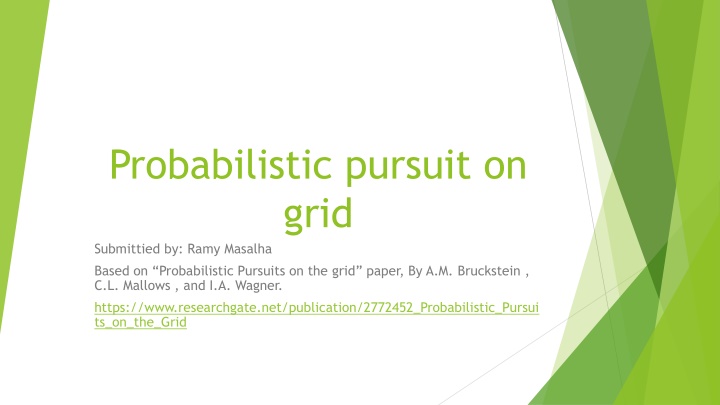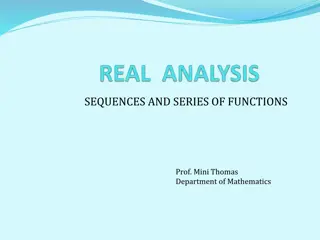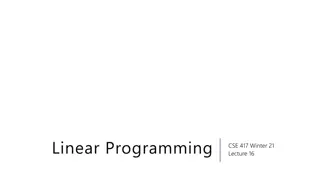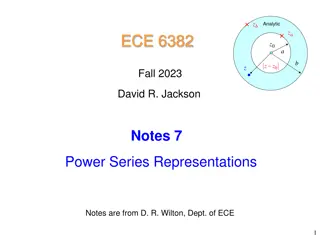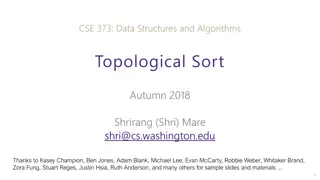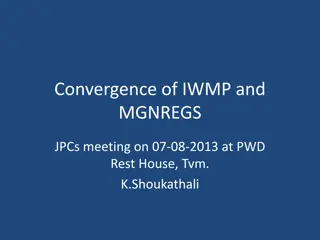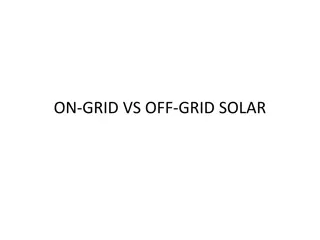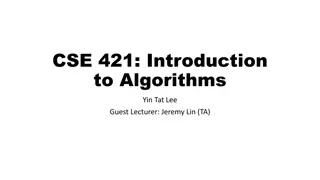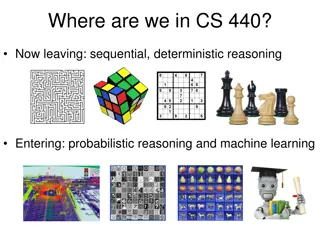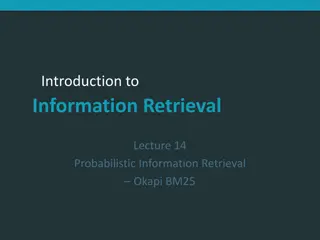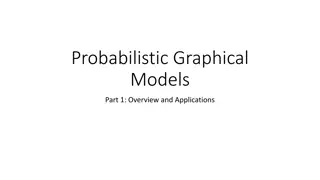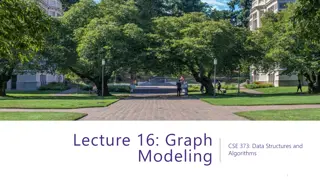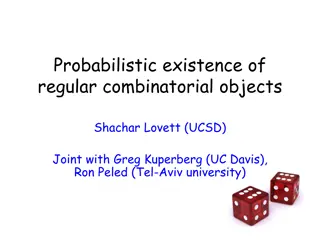Probabilistic Pursuit on Grid: Convergence and Shortest Paths Analysis
Probabilistic pursuit on a grid involves agents moving towards a target in a probabilistic manner. The system converges quickly to find the shortest path on the grid from the starting point to the target. The analysis involves proving that agents will follow monotonic paths, leading to efficient convergence.
Download Presentation

Please find below an Image/Link to download the presentation.
The content on the website is provided AS IS for your information and personal use only. It may not be sold, licensed, or shared on other websites without obtaining consent from the author.If you encounter any issues during the download, it is possible that the publisher has removed the file from their server.
You are allowed to download the files provided on this website for personal or commercial use, subject to the condition that they are used lawfully. All files are the property of their respective owners.
The content on the website is provided AS IS for your information and personal use only. It may not be sold, licensed, or shared on other websites without obtaining consent from the author.
E N D
Presentation Transcript
Probabilistic pursuit on grid Submittied by: Ramy Masalha Based on Probabilistic Pursuits on the grid paper, By A.M. Bruckstein , C.L. Mallows , and I.A. Wagner. https://www.researchgate.net/publication/2772452_Probabilistic_Pursui ts_on_the_Grid
A(ge)nt system introduction There are N agents. First a(ge)nt follows an arbitrary path from the origin S=(0,0) to some target T=(??,??) on the grid, jumping from point to point at each time unit. For simplicity, Agent locations on the grid will be encoded as complex numbers: ??? = ??? + ? ??? , where ? = 1. After each 2 (integer) time units, a new agent starts moving. Agent ??+1chases agent ??, by making jumps according to the following probabilistic rule:
Suppose ??is at distance (x, y) from ??+1, then the next position of ??+1 is determined by: ??+1? + 1 = ??+1? + ??+1(? + 1), where ??+1 random variables taking values in 1, 1,?, ? according to: are | x| ????{??+1? + 1 = ????( x)} = | x+ y|, | y| ????{??+1? + 1 = ????( y) i} = | x+ y|.
Result 1 The agents will converge very fast to take a shortest path on the grid from S to T There are many shortest paths on the grid! These paths are all the paths from S to T on with length ??+ ??.
Proof summary main ideas Denote by ? ?? the length of the walk of the nth agent. It is easy to see that ? ??+1 ? ??. Thus, it is enough to prove that the probability for having ? ??+1 < ? ?? is bounded from below by some ? > 0.
Suppose for ease of discussion that ?? 0,?? 0. A path will be called monotonic if it does not contain left or down steps. Note that a path on the grid from S to T is a shortest path iff it is monotonic.
Suppose ? ?? > ??+ |??|. i.e. the path of agent ??is not monotonic. Let [?0,?1] be the earliest interval such that the steps ??took at times ? = ?0 and ? = ?1cancel each other. Assume without loss of generality that ??took a left step at t = ?0, then it continued upwards at ?0< ? < ?1, and it took a right step at t = ?1. ) be the position of ??at ? = ?0, and let (? ,?1 ) be its position at Let (? ,?0 t = ?1. The only chance for the distance between ??and ??+1not to decrease during ?0 ? ?1is if there exist times ?0< ?2< ?3< ?1such that ??+1stepped on the line x=x at t = ?2and then it took a step to the left at t = ?3.
Figure only chance for ? ??,??+1 not to get smaller
Therefore, if ??+1reaches the line ? = ? at ? = ?2, and it resists not to go left during the time interval [?2,?1], then the distance between ??and ??+1is guaranteed to become smaller. In other words, the probability for having ? ??+1 < ? ?? is bounded from bellow by: ?2 ?1 ? ?? ? ?0. ?2 ?1= ?2 ?1 ? ? 1 1 1 ?+ ? ?+1 Q.E.D
Result 2: The stationary path- distribution is uniform.
Proof summary main ideas The paths followed by successive ants form a Markov chain, with the state- space being all paths from the origin to T. It can be shown that this chain is irreducible and aperiodic (and therefore ergodic) We shall prove that the uniform distribution over the set, A, of monotonic paths is stationary.
Analogy Suppose we have a supply of black and white balls, and a series of urns ?0,?1,?2, , which initially are all empty. At time ? = 1,2, , ??+ ??, an agent ?0places a ball, either white or black, into ?0. At each time , + 1, , agent ?1takes a ball at random from ?0(which at time contains balls) and places it in ?1. At each time 2 ,2 + 1, , agent ?2takes a ball at random from ?1and places it in U2, and so on. For each urn, the number of balls it contains starts by rising from zero to , stays there a while, and then decreases to zero.
This description is equivalent to that of probabilistic pursuit, if we take a white ball for a right-step and a black ball for an up-step, and identify the position ??t with w + ib where w (respectively, b) is the total number of white (respectively, black) balls this agent has seen by time t. The number of white (black) balls in urn ?? 1corresponds to the x (y) position of ?? 1 relative to ??.
Proof continued main idea Suppose the path of the pursued target, ?0, is chosen uniformly from the set of all monotonic paths, A, e.g., by drawing from an urn with ??white and ?? black balls, and moving right on white and up on black. Using the urn representation, we can obtain the distribution over all possible paths for the kth ant by considering a sequence of urns ?0,?1, ,??, with the black and white balls being moved downstream, as described earlier. The distribution of paths for the kth agent is given by the distribution of ball- color sequences seen entering the urn ??in this process. Disregarding the color of balls, by symmetry all (a + b)! sequences of balls are equally probable to appear as inputs to ?? Hence, all possible sequences of black and white balls are also equiprobably seen entering the kth urn. Q.E.D
Result 3: Assuming stationarity, the average path is the straight line from origin to target, and agents are usually very near the average path.
Figure agents are usually very near the average path. Gray level of the patches depicts the percentage of agents stepped on the corresponding patch.
Result 4: Assuming stationarity, the probability for an agent to step on coordinate (x, y) on the grid (when 0 ? ??,0 ? ??) is: ??+?? ? ? ?? ? ?+? ? This result stems from the fact that the stationary path-distribution is uniform, and that the number of paths on the grid from origin to ??,?? passing in coordinate (x, y) is given by ?+? ??+?? ? ? ?? ? ?
